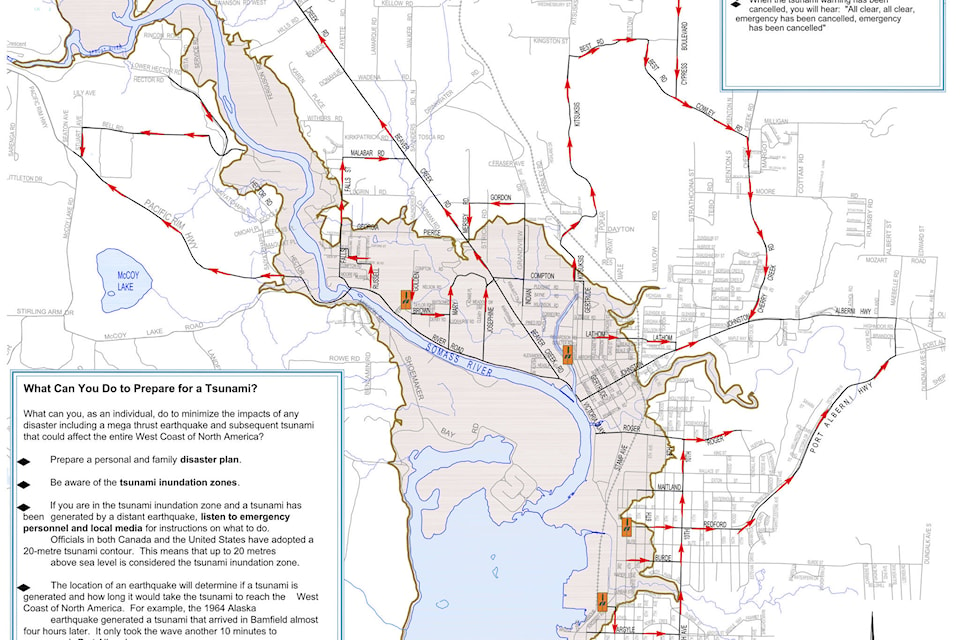Three months after Port Alberni residents were jolted out of bed and forced up the hills to higher ground, researchers from the University of British Columbia visited the city to record residents’ reactions to the early-morning tsunami evacuation.
Dr. Ryan Reynolds and Alex Tanner have received more than 400 responses from residents in the community, through both door-to-door interviews and an online survey.
“The overall impression was that it went pretty well,” said Tanner.
Despite the time of night, residents across low-lying regions reported that community civility and cooperation allowed for a swift and safe move to higher ground. Accolades were given to emergency response officials for raising the alarm.
“People were happy it. They recognize that they live in a tsunami hazard zone, so a nighttime evacuation is always a possibility,” said Tanner, adding, “There were some concerns about traffic.”
However, the evacuation revealed some oversights in communications to the public. Interviewees raised similar questions and concerns: Where are we supposed to evacuate to? What sorts of supplies are needed? Who exactly is at risk?
In general, all low-lying regions are at risk for tsunami damages, and evacuation can be to anywhere uphill. Friends and family are ideal; the Echo Centre is the designated official reception centre. Officials at West Coast General Hospital have asked that people keep the lot clear for emergencies.
Recommended emergency supplies that families should keep on hand include extra water, food, a first-aid kit, emergency phone numbers and copies of documents and, for those with cars, a partially filled tank of gas.
Further information about tsunami evacuations can be found on the Alberni Clayoquot Regional District website and the Prepare BC webpage.
Tanner said local municipalities can work on getting the word out through social media.
“People are turning to online sources for this information,” she said. “There was virtually no online presence on the night of the evacuation. I know they are working on improving that.”
Tanner and Reynolds are analyzing all the results and aiming to have a preliminary report prepared for mid-May.
The researchers said that during discussion with residents, they saw tremendous support for pre-planned community-based responses. Simple actions, like being in contact with neighbours who may need additional support or lack a vehicle to evacuate, can go a long way in helping the community as a whole respond to an emergency.
